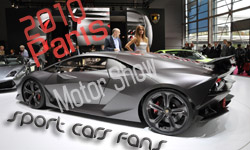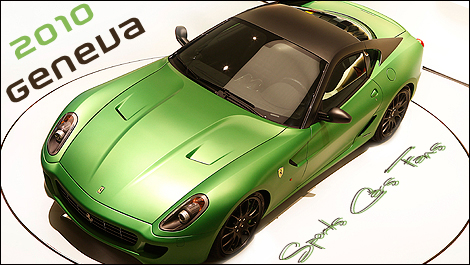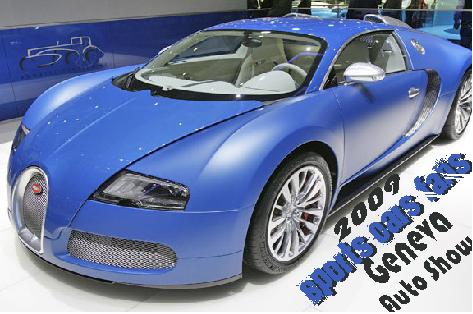Review: 2009 Lexus IS F

The Lexus IS F is the sole Japanese contender in a crowd of compact high-performance sport sedans. Boasting a full complement of performance upgrades, including a 5.0-liter V8 mated to a quick-shifting eight-speed automatic transmission, the 416-horsepower sedan blasts to 60 mph in well under five seconds. But the stats only tell part of the tale. Do the sum of the IS F's parts make it a contender against the best from Germany and America?
The first Lexus IS rolled into showrooms about a decade ago. The rear-wheel drive sedan sported a silky 3.0-liter inline-six (2JZ-GE) and went head-to-head against the standard BMW 3 Series, Mercedes-Benz C-Class and Audi A4. A fine compact sedan under anyone's scrutiny, the first-generation IS only offered one engine. Lacking a factory-tuned performance variant, it was forced to sit on the sidelines and watch as the competition's high-performance M3, C43, and S4 frolicked through America's canyons and race circuits.
The second-generation Lexus IS bowed in 2006. Following the European's lead and in keeping with the times, the Japanese automaker replaced the single inline-six with two V6 choices: 2.5-liter or 3.5-liter. Unfortunately, even with a strong 306-hp engine under the hood of the IS350, the new sedan was still ultimately outgunned by its high-performance competitors. Lexus finally answered the pleas of those seeking a Japanese alternative to the BMW M3, Audi RS4, Mercedes-Benz C63 and Cadillac CTS-V when it introduced its IS F variant at the 2007 Detroit Auto Show. The IS F wasn't just the first hot IS model to hit the showroom; it was the first high-performance car from Toyota's luxury division.

Compared to its lesser siblings, the IS F is visually distinguished by its aggressive front splitter, oversized hood, flared fenders, 19-inch wheels, rear spoiler, and angle-stacked quad exhaust outlets. You may have heard by now that those four rear chrome ovals sing with the authenticity of Milli Vanilli (the real exhaust is dumped a couple inches in front of them), but that's an increasingly common tactic these days, and at least it serves to keep the finishers clean.
The interior features sporty bucket seats, revised instrumentation, special trim, and additional standard features. Of course, there are also plenty of "F" emblems and escutcheons on the car to remind you why you paid a base price of $56,610 (our tester rang up at $61,120). In case you were wondering, that is a $25,000 premium over the entry-level IS250. The cosmetics and nomenclature are nice, but it is the mechanical ingredients that stir our souls.

Shoe-horned under our 2009 model's aluminum hood is the company's 5.0-liter V8 (2UR-GSE) that shares its basic architecture with the engine found in the hybrid Lexus LS 600h. Unlike its gas-electric big sister, this bad boy has been tuned by Yamaha to crank out another hundred-plus horses and gobs more twist. The result is a turbine-smooth, all-aluminum monster rated at 416 hp and 371 lb.-ft. of torque. Bucking the recent trend of offering a race-bred dual-clutch transmission, Lexus engineers chose to send the power through a modified electronically-controlled eight-speed automatic sourced from the LS 460.
Powertrain complete, the Lexus engineers lowered the car and beefed-up the double-wishbone suspension with sport-tuned dampers, high-rate coil springs, and hollow stabilizer bars. The standard wheels are 19-inch forged units from BBS, wearing 225/40R19 tires up front and 255/35R19 rubber in the rear. A limited-slip differential ensures power is consistently sent to both sides. Generous six-piston front and two-piston rear calipers, both sourced from Brembo, are in place to reign-in the 3,780-pound sedan, and like the others battling it out in this segment, the IS F looks absolutely great on paper. But, let's see how she runs...
Dropping this writer's six-foot, two-inch frame behind the wheel of the smallest Lexus four-door wasn't a problem. The overall cabin is intimate, but comfortable for the driver and shotgun passenger. The heavily bolstered sport seats up front fit well and leg room is not an issue. The steering wheel isn't particularly thick, but it is satisfactory in the hand. Set immediately behind the rim, perfect distance from the fingertips, are dual transmission paddles "done properly" (downshift on the left, upshift on the right). Lexus has eliminated the middle rear seat, allowing just four passengers to enjoy the IS F. Despite the change, those in the rear will be cramped, as the Lexus IS cabin is the least accommodating when compared to its primary rivals.
The over-engineered dashboard of the IS F isn't as interesting as the chronograph-inspired previous-gen IS300 model, or as ergonomically friendly. Although the touch-screen navigation unit works well, we never warmed to the unintuitive switch locations and the smallish climate control buttons. Ironically, the greatest offender is the all-important Lexus Vehicle Dynamics Integrated Management (VDIM) "sport mode" switch. Its primary task is to increase throttle response, tighten steering feel, and extend the envelope of stability control. Sadly, the little black rocker is perfectly hidden behind the steering wheel. Making matters even more frustrating, it defaults to "normal" whenever the car is shut off, so it needs to be pressed each time you start the car and want to get down to business.

Ergonomics and switch logic aside, with a press of the start button, the V8 springs to life. We're pleasantly surprised to find the rumble at idle is akin to an American muscle car-low and deep with a slight burble. Gearshift placed simply into Drive, we pull out to empty the road and floor it.
It's hard to describe the sound that emanates from the IS F under full throttle. It starts as a deep, guttural rumble from the rear of the car. As the speed builds, the engine's variable valve timing (VVT-iE) takes charge and the audio moves rapidly forward. The firewall strains to contain the beast that thunders from under the hood above 4,000 rpm as the engine spins towards redline. The audio track of the IS F is near perfect. It is never tiring or droning, and it always seems to get the pulse racing just right. The V8's enthusiast-gratifying howl should be studied by the competition, and duplicated accordingly.

Our fear was that this brilliant engine was wasted on an LS460-sourced (*ahem*) slushbox transmission. Wrong. The eight-speed automatic sprints through its gears like Ashley Force covers a quarter mile. It doesn't seem to leave one ounce of power on the table. If you want to be pampered, it delivers warm buttery smooth shifts that maximize economy. If you want to scream, it instantaneously drops directly into the power band and breaks the rear tires loose. Leave the electronics in "Sport" mode and the shifter in "Drive" for the perfect balance between wussy and warrior and be mesmerized as the electronic brain magically matches to the gear you were thinking about. While we still prefer a dual-clutch, this could be the best electronically-controlled auto we've ever sampled.
We didn't hook test gear up to the IS F, but Lexus claims a run to 60 mph in about 4.5 seconds. Hold the pedal down, and the fun is electronically cut off at 170 mph. Through the bottom pockets of our jeans, it feels about as fast as the BMW M3, but the torque-heavy Mercedes-Benz C63 and Cadillac CTS-V ought to outsprint it. Thanks to the aforementioned lightning-fast transmission, highway acceleration is awesome. The IS F will be complacently loafing along in its top gear when you stab the throttle, but when called upon, in a split-second, it drops down to third gear and throws your torso into the seatback as the traffic around you fills the rearview mirrors.



Naturally, we took the IS F into the California mountains, and with the VDIM switch set to "Sport" (as it exhaustively was practically the whole week) we rolled back and forth on our favorite stretch of squiggly asphalt. Unquestionably, the Lexus was both competent and entertaining. Its smallish wheelbase allowed the IS F to tackle the road with the ravenousness of a sports coupe, not a four-door sedan. The sticky Bridgestone RE050A tires never protested, and the electronic stability control gave us a long leash. Only when pushed a bit too hard did it eventually surrender to the laws of physics – the result was easily managed vanilla understeer.
Looking for flaws while playing in the canyons, we found two small areas in need of improvement. First, although the steering accuracy was never questioned, the electronic assistance was a bit lighter than we'd like even with "Sport" mode activated. It had an artificial feel that just wasn't right. Second, although fade or stopping power wasn't an issue, we would have enjoyed brake pads with a bit more initial bite during the first inch of pedal application. We'd accept some brake noise or accelerated wear for better pedal feel. Neither of these were deal-killers, mind you, just small blemishes.

During the course of the week, we drove the Lexus IS F all over the Los Angeles basin. We suffered through traffic on the way to the airport and loaded the sedan with family as we headed down to Disneyland for the day. We took the in-laws to dinner one evening, and then purchased plants at Home Depot the next morning. The dual-personality of the Lexus was appreciated, even if it was underutilized in this flavorless role.
About the only obvious annoyance with the Lexus IS F was found deep within its wheel wells – that sport-tuned suspension. While the Lexus sport sedan is great in the canyons, a joy to toss into the corners, straight-line driving on anything but polished marble will leave you and your occupants wondering how to turn the methodical oscillations off. Around town, the ride may be brushed aside as sportiness. However, highway travel becomes downright agitating as minor undulations are amplified by suspension tuning that relentlessly rocks occupants – it's not harsh, just overly busy. Lexus engineers missed the mark as their counterparts each seem to offer a more complaint ride without any compromise of their sport-tuned objectives. The IS F is an excellent candidate for electronically-controlled dampers.
As for fuel usage, let's just say the EPA's rating of 16 mpg city and 23 mpg highway proved to be a bit optimistic with our heavy size elevens on the gas pedal. Going out of our way to fill the tank after a 116-mile canyon tour, the IS F returned 13.28 mpg (calculated by hand). While that was expected, what we didn't anticipate the excellent fuel economy delivered during our highway trip with four passengers and luggage. Filling the tank immediately after exiting the highway, we calculated that the Lexus sipped fuel at the rate of 25.09 mpg during the 174-mile trek – better than our Nissan Murano achieved on a similar highway cycle with the same load.
We all have to consider ourselves rather lucky. The high-performance sedan segment bears a suite of 400-plus horsepower jewels, each delivering a slightly different driving experience. The BMW M3 is the nimble athlete, using agility to dismiss its lack of torque. The Mercedes-Benz C63 is decidedly beastly, powering its way around in a unique Teutonic muscle car manner. The outgoing Audi RS4 still offers all-wheel drive and impeccable accommodations, confidence and comfort under any road conditions. The Cadillac CTS-V matter-of-factly delivers the most of everything with traditional brutal American excess – at a value pricepoint.
The Lexus IS F is not the fastest, not the most nimble, and certainly not the most comfortable of the clan. It may be the least expensive for now, but the savings are really negligible in this price bracket. What the IS F brings to the table is distinctive Japanese execution of design. That means it does everything it was designed to do with precision, polish, and reliability (yet that exactness may come at the expense of idiosyncrasies and peculiarities many enthusiasts call "personality"). If this perfection in execution is your aspiration, however, then the IS F is your accomplished ride.
[Source: Autoblog]















